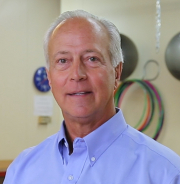Transferring body weight in all athletes, especially golfers, is extremely important for your movement pattern to be efficient. You must transfer your weight and control your center of gravity. If you cannot control your center of gravity the body takes on more physical stress and injury probability increases.
A condition that presents occasionally and becomes a constant challenge to the athlete is when the big toe on one foot is injured. Often the golfer will come in complaining of chronic lower back or sacroiliac pain of a dull moderately intense nature. A functional movement assessment may find dysfunction in the lumbar or sacroiliac area but will also reveal restriction in their big toe. Any restriction of the big toe in the trail foot of any golfer will present a strong challenge to their golf swing.
Periodically a golfer will have chronic pain in their big toe. If pain is localized the obvious diagnosis of gout can be confirmed by performing imaging studies and bloodwork.
In cases involving PGA golfers often the golfer will present with lower back symptoms and no foot pain at all. The condition will be more apt to provoke symptoms if it is in their trail foot as opposed to their lead foot. In right handed golfers it would be in the right big toe.
The condition is termed Hallux Rigidus. When the condition is seen on the PGA Tour golfer it is usually a secondary sequella to a traumatic injury to the foot. As a result motion in the metacarpal-phalangeal joint of the big toe will take on various levels of restriction. Worst case is the big toes loses all motion and becomes inflexible.
Very difficult to golf if you cannot push off your right foot. The right toe contributes greatly to plantar flexion and push off for weight transfer. If it is inflexible or severely restricted it is hard to generate force and make a consistent golf swing. Pushing off the right foot to start the downswing to impact and follow through the golfer will find all phases challenging. The more athletic the golfer the better they will use other body parts to accommodate the restriction. Amazingly there are players on the PGA Tour with this condition and playing very good golf.
How? You have to address the condition the best you can with soft tissue procedures, manipulation, mobilization techniques, and exercises. Exercises not just for the big toe but ankle, knee, hip, mid back and shoulders. Focus on the local issue AND how the rest of the body can assist with the demand placed on the right foot. The condition is a given and not fixable. Surgery often is not an option. Regular, frequent treatments are the best approach depending on symptoms and the functional ability of the foot. A golfer that adheres to consistent home care will have the best success..
Difficult condition but it can be worked with. A few committed and diligent PGA golfers will attest to that!

